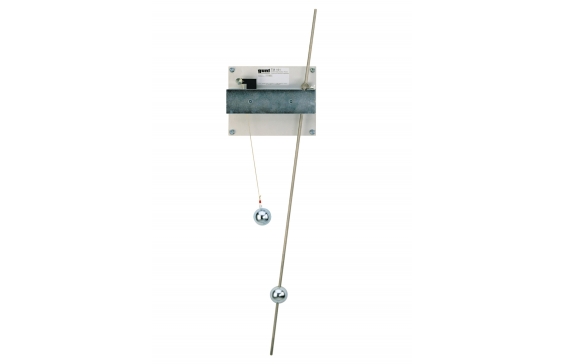TM 161 Rod and gravity pendulum

Pendulums perform oscillations. Gravity produces the restoring moment. We distinguish between mathematical and physical pendulums. A mathematical pendulum describes an idealised gravity pendulum. In physical pendulums, the shape and size of the pendulum body is taken into account. Both are theoretical models for the description of a real pendulum.
The TM 161 unit is used to study pendulum swings. A gravity pendulum (mathematical pendulum) and a rod pendulum (as a physical pendulum) are compared to each other. The unit contains a metal rod with a movable auxiliary mass as the rod pendulum. The suspension point can be adjusted on the knife-edge bearing of the pendulum. The length of the gravity pendulum can be easily changed using a clamping device.
The experimental unit is designed to be fixed to a wall.
- investigation of pendulum swings
- comparing physical and mathematical pendulums
Gravity pendulum
- length: up to 2000mm
- nylon rope
- weight
- diameter: 50mm
- mass: 0,52kg
Rod pendulum
- length:1000mm
- diameter: 8mm
- mass: 0,39kg
- pendulum weight
- diameter: 50mm
- mass: 0,49kg
Stopwatch: 1/100s
- experiments on pendulum swings, comparison of physical and mathematical pendulums
- rod pendulum as physical pendulum, made
of metal and mounted on knife-edge bearing - knife-edge bearing mounted to slide on the rod to effectively vary the pendulum length
- weight for the rod pendulum, sliding
- gravity pendulum as a mathematical pendulum
- adjustable length of the gravity pendulum
- stopwatch to measure the oscillation period
- bracket for wall mounting
- oscillation period of gravity and rod pendulum
- determine centre of gravity on the rod pendulum
- reduced pendulum length and centre of inertia of the rod pendulum
